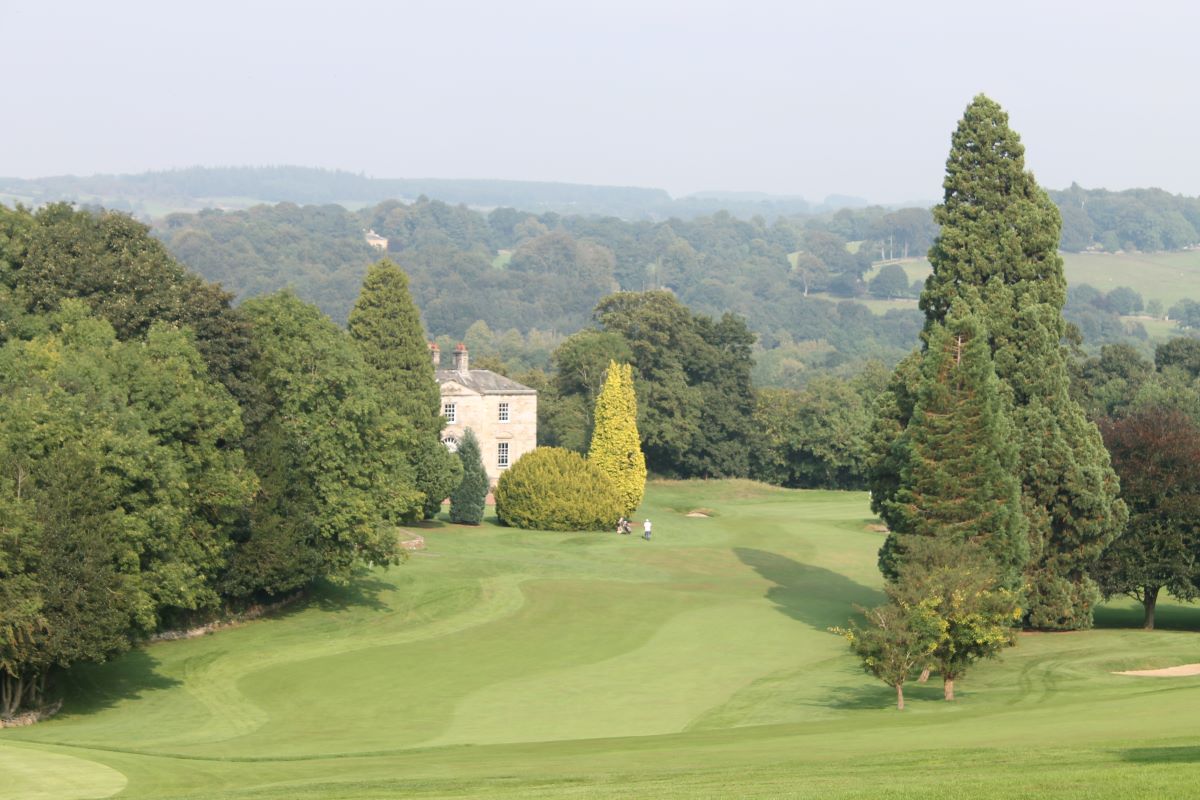- Homepage
- News and Features
- Rooted in tradition – Hexham’s trees are an invaluable part of the golf course
Rooted in tradition – Hexham’s trees are an invaluable part of the golf course
Hexham’s trees are as aesthetically pleasing as they are agronomically challenging, and Course Manager David Thompson wouldn’t have it any other way.

The traditional parkland course sits on free-draining land on the south side of the River Tyne, with its variety of trees – one thought to be over 700 years old – a stand-out feature. This rich arboreal heritage is a point of pride for the club and its members, but it also presents a host of challenges for the greenkeeping team.
David has been at the Northumberland venue for 15 years, spending the last seven in his current role, and here he provides an insight into managing Hexham’s tree-lined surfaces.
What variety of trees do you have at Hexham?
We have about 46 different types of tree on the golf course. We have a lot of beech, ash, sycamore and a variety of oak trees. We have a large range of mixed-stage specimens, ranging from young to semi-mature, ornamental and amenity trees, and then to large veteran trees as well. Years ago one of the members went around and identified the different trees and we have around 200 identification plaques around the course.
Are there any particularly interesting ones?
We have one that ecologist James Hutchinson identified as being an ancient oak tree that’s upwards of 700 years old, and that’s registered in the Ancient Tree Inventory. It’s called the Leper Oak as the present clubhouse used to be a leper hospital run by the monks from the nearby Hexham Abbey. They say people from the town used to put food out for the lepers underneath the tree.
What tree-management plans do you have in place?
We get a tree survey done by an arboricultural consultant every year. He surveys the whole site and identifies any areas that need addressing, including anything that’s dead or decaying. Health and safety is a constant consideration because we have a main road that runs along the northern edge of our property and public bridleways which are heavily tree-lined.
He can recognise issues where we might not see them and there have been examples where we’ve thought a tree was healthy, but we’ve stripped the ivy off them and found big cavities and signs of significant decay. On the back of the report the consultant provides, we do the work that’s necessary and we’ve been doing that for the past four years.

What problems do trees pose to the maintenance of a golf course?
It creates shade and moisture issues that cause disease pressure, particularly in the shoulder periods of spring and autumn when you get the low-lying sun. There are areas that don’t get much sunlight and that impacts the type and quality of grass you can maintain. Leaves are a big factor and it’s a lot of work to clear those. The tree roots suck up moisture and nutrients and that means the grass is dryer and under more stress, so there are a number of agronomic challenges to overcome when trees are such a feature on your course. If you didn’t have the trees, the course wouldn’t look as spectacular, but it would be a lot easier to manage!
Do you think the average golfer understands the challenges for a greenkeeper managing a course where trees are so abundant?
I don’t think they realise the resources and the logistics involved, particularly at this time of year. People who work in the industry will understand, but the average golfer sees trees as a nice feature of the course or something that might get in the way of their shot. The trees have a big impact on our resource here as a five-man team, where just clearing the leaves is a major daily challenge.
What part do the trees play in the wider ecosystem of the course?
The trees support vast amounts of insects, pollinators and birds large and small. You see in the spring they come to life, particularly the oaks and the beech, as they support a lot of invertebrates and that’s a part of the food chain. We have raptors and all sorts of birds, so we put bird boxes up to encourage them. A lot of the older trees have holes and cavities which offer natural nesting areas.

How important is the ecological aspect of greenkeeping to you?
It’s massive and it’s something we put a lot of focus on at Hexham. In out-of-play areas we’ll let the long grass come up and we have scrubland areas just left for the wildlife. We build eco-piles and encourage wildflower areas and do all sorts to promote biodiversity around the course. I think perceptions are changing now and people realise golf courses are great places for wildlife and it’s part of our job as greenkeepers to make sure we’re promoting that. GI
Author

BIGGA
Pollarding
What is pollarding and should you be doing it?
David revealed that one recommendation sometimes made by the arboricultural consultant is to pollard some trees, which involves cutting back a tree’s main stem and branches to a predetermined height. This results in the tree producing new growth from the cut points, rather than continuing to grow taller.
The benefits of this method include:
- Habitat creation: By leaving the tree trunk and stems, it creates a habitat for invertebrates and other small organisms. This helps maintain biodiversity on the golf course.
- Safety: Pollarding can help address safety concerns with large, mature trees by removing the upper branches and reducing the risk of falling limbs without removing the tree entirely.
- Preservation: Pollarding retains the tree as a landscape feature while managing its growth and potential hazards.
